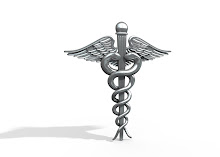
The ancient art of tai chi uses gentle flowing movements to reduce the stress of today's busy lifestyles and improve health. Find out how to get started.
The graceful images of people gliding through dance-like poses as they practice tai chi (TIE-chee) are compelling. Simply watching them is relaxing. Tai chi, in fact, is often described as "meditation in motion" because it promotes serenity through gentle movements — connecting the mind and body.
Originally developed in China as a form of self-defense, tai chi is a graceful form of exercise that has existed for some 2,000 years. Practiced regularly, tai chi can help you reduce stress and enjoy other health benefits.
Understanding tai chi
Tai chi, sometimes called tai chi chuan, is a noncompetitive, self-paced system of gentle physical exercise and stretching. To do tai chi, you perform a series of postures or movements in a slow, graceful manner. Each posture flows into the next without pausing.
Anyone, regardless of age or physical ability, can practice tai chi. It doesn't take physical prowess. Rather, tai chi emphasizes technique over strength.
Tai chi is used to:
- Reduce stress
- Increase flexibility
- Improve muscle strength and definition
- Increase energy, stamina and agility
- Increase feelings of well-being
Tai chi has more than 100 possible movements and positions. You can find several that you like and stick with those, or explore the full range. The intensity of tai chi varies somewhat depending on the form or style practiced. Some forms of tai chi are more fast-paced than others, for instance. However, most forms are gentle and suitable for everyone. And they all include rhythmic patterns of movement that are coordinated with breathing.
Although tai chi is generally safe, consider talking with your doctor before starting a new program. This is particularly important if you have any problems with your joints, spine or heart.
Stress reduction and other benefits of tai chi
Like other practices that bring mind and body together, tai chi can reduce stress. During tai chi, you focus on movement and breathing. This combination creates a state of relaxation and calm. Stress, anxiety and tension should melt away as you focus on the present, and the effects may last well after you stop your tai chi session.
Tai chi may also help your overall health, although it's not a substitute for traditional medical care. Tai chi is generally safe for people of all ages and levels of fitness. Older adults may especially find tai chi appealing because the movements are low impact and put minimal stress on muscles and joints. Tai chi may also be helpful if you have arthritis or are recovering from an injury.
Despite its ancient history, tai chi has been studied scientifically only in recent years. And that research is suggesting that tai chi may offer numerous other benefits beyond stress reduction, including:
- Reducing anxiety and depression
- Improving balance and coordination
- Reducing the number of falls
- Improving sleep quality, such as staying asleep longer at night and feeling more - alert during the day
- Slowing bone loss in women after menopause
- Lowering blood pressure
- Improving cardiovascular fitness
- Relieving chronic pain
- Improving everyday physical functioning
Learning to do tai chi
Wondering how to get started in tai chi? You don't need any special clothing or equipment to do tai chi. To gain full benefits, however, it may be best to seek guidance from a qualified tai chi instructor.
A tai chi instructor can teach you specific positions and how to regulate your breathing. An instructor also can teach you how to practice tai chi safely, especially if you have injuries, chronic conditions, or balance or coordination problems. Although tai chi is slow and gentle, with virtually no negative side effects, injuries are possible if tai chi isn't done properly. It's possible you could strain yourself or overdo it when first learning. Or if you have balance problems, you could fall during tai chi.
You can find tai chi classes in many communities today. Contact your local senior center, YMCA or YWCA, health club, community education center or wellness facility for help finding qualified instructors.
During tai chi classes, the instructor can give you personal guidance and correct any errors in your style before they become habit. Eventually, you may feel confident enough to do tai chi on your own. But if you like the social element, consider sticking with group classes.
Putting tai chi into practice
To reap the greatest stress reduction benefits from tai chi, consider practicing it regularly. Many people find it helpful to practice tai chi in the same place and at the same time every day to develop a routine. But if your schedule is erratic, do tai chi whenever you have a few minutes.
You can even draw on the soothing concepts of tai chi without performing the actual movements if you get stuck in stressful situations — a traffic jam or a work conflict, for instance.

These are some wonderful exrcises, I've tried them myself and I can seriously say that they really work and even when you are so tired and out of balance, it helps you restablish your balance and it makes you feel so much better! Just try:D






